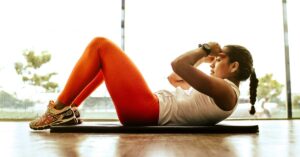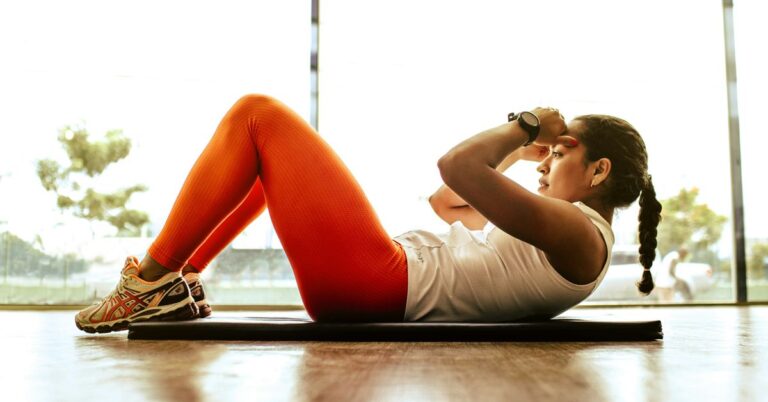Why You Don’t Need a Gym: Mastering Home Workouts with Just a Few Tools
Have you ever found yourself staring longingly at your gym membership card, wondering if you’d ever use it again? You’re not alone. Many of us have been there, contemplating the convenience of staying at home versus the effort of trekking to the gym. The truth is, you don’t need a fancy gym membership to achieve your fitness goals. With just a few simple tools and a dash of motivation, mastering home workouts is not only feasible—it can be downright enjoyable.
The Rise of Home Workouts
Let’s take a moment to appreciate the seismic shift that has occurred over the past few years. The COVID-19 pandemic forced many of us into our homes, and with that came a newfound appreciation for home workouts. Fitness professionals and enthusiasts alike began to adapt, creating innovative routines that required little more than the space of a living room. I remember the first time I tried a virtual workout; my living room turned into a makeshift gym, complete with a yoga mat that had seen better days and a couple of dumbbells I’d dusted off from the garage.
What struck me then was the realization that we can achieve amazing results without the need for commercial gym equipment. If you’re still clinging to the notion that you need a gym to get fit, let’s explore the many benefits and possibilities of home workouts.
Why Ditch the Gym?
Before diving into the practicalities of home workouts, let’s address why you might want to leave the gym behind:
- Cost-Effective: Gym memberships can be pricey, not to mention the added costs of transportation and potential personal trainers. With home workouts, you can save that cash for something more fun—like a post-workout smoothie.
- Convenience: No more waiting for machines or feeling self-conscious about your technique. Your home is your sanctuary. Work out in your pajamas if you like—who’s judging?
- Flexibility: Home workouts allow you to choose when you exercise. Early morning, late at night, or during your lunch break—your schedule, your rules.
- Personalization: You can tailor your workouts to fit your preferences, whether that means blasting your favorite music, practicing yoga, or trying out the latest fitness trend without any awkward glances from fellow gym-goers.
Essential Tools for Home Workouts
Now, let’s talk about the tools you need to get started. Spoiler alert: you probably already have most of them. Here’s a rundown of essentials that can elevate your home workout game:
1. Dumbbells
A pair of dumbbells can work wonders for your strength training routine. They’re versatile, portable, and come in a range of weights to suit your needs. You can use them for everything from bicep curls to goblet squats. If you’re just starting out, consider getting a lighter set and gradually increasing the weight as you build strength.
2. Resistance Bands
These colorful bands are often underrated. They are lightweight, easy to store, and fantastic for adding resistance to your workouts. Whether you’re doing glute bridges or shoulder presses, resistance bands can help you engage muscles you didn’t even know you had!
3. A Yoga Mat
Even if you’re not into yoga, a good mat is essential. It provides cushioning during floor exercises, makes stretching more comfortable, and can help prevent slips during more dynamic workouts. Plus, they’re great for impromptu dance parties (just saying).
4. A Stability Ball
If you want to add an element of fun to your workouts, a stability ball is a perfect choice. It can be used for core exercises, balance training, and even as a chair while you work (hello, multitasking!).
5. Jump Rope
This classic piece of equipment is a powerhouse for cardio. Jumping rope can be an exhilarating way to get your heart rate up and improve coordination. Plus, it’s a great way to tap into those childhood memories of skipping in the park.
Crafting Your Home Workout Routine
Now that you’re equipped with the right tools, it’s time to craft a workout routine that suits your lifestyle and goals. Here’s a step-by-step guide on how to do just that:
Step 1: Set Clear Goals
Before you jump into your new routine, take a moment to set some goals. Are you looking to lose weight, build muscle, increase flexibility, or simply maintain your current fitness level? Having clear objectives will help you stay focused and motivated. Remember, goals should be SMART—Specific, Measurable, Achievable, Relevant, and Time-bound. (I once set a vague goal to “get fit” and ended up doing… well, nothing.)
Step 2: Choose Your Workouts
With your goals in mind, select a variety of workouts that align with what you want to achieve. Consider incorporating:
- Strength Training: Aim for at least two to three days a week. Focus on major muscle groups and use the dumbbells and resistance bands to challenge yourself.
- Cardio: Whether it’s jump rope, high-intensity interval training (HIIT), or a brisk walk around your neighborhood, get your heart pumping! Aim for at least 150 minutes of moderate aerobic activity each week.
- Flexibility and Balance: Incorporate yoga or stretching sessions to improve your flexibility and balance. These can be restorative and help prevent injuries.
Step 3: Create a Schedule
Consistency is key. Create a weekly schedule that includes your workouts, rest days, and any other activities you enjoy. I’ve found that dedicating a specific time each day helps solidify the habit. You might even find it helpful to set reminders on your phone—though, fair warning, you might need to resist the urge to hit “snooze.”
Step 4: Track Your Progress
Tracking your progress is crucial for staying motivated. Consider keeping a fitness journal or using an app to log your workouts, reps, and how you feel after each session. It’s satisfying to look back and see how far you’ve come. (Trust me, those little victories count!)
Overcoming Common Challenges
Let’s be real—working out at home can come with its own set of challenges. Here are a few common hurdles and how to overcome them:
Distractions
When your couch is mere feet away, the temptation to binge-watch your favorite show can be strong. To combat this, create a dedicated workout space. It doesn’t have to be fancy; just a corner of your living room or bedroom that’s free from distractions will do. You might even find it helpful to keep your workout gear in that space as a visual reminder.
Lack of Motivation
Sometimes, the hardest part is just getting started. Try partnering with a friend for virtual workouts, or join online fitness classes to stay accountable. You might also create a playlist of your favorite pump-up songs to get you in the mood—nothing beats a good beat to get those endorphins flowing!
Plateaus
It’s common to hit a plateau where you feel like you’re not making progress. If this happens, consider changing up your routine. Introduce new exercises, increase weights, or try out different workout styles. Variety can be the spice of life—and your fitness journey!
Incorporating Technology
In our digital age, there’s no shortage of fitness resources available at our fingertips. From YouTube channels to fitness apps, here are a few tech-savvy tools that can enhance your home workout experience:
Fitness Apps
There’s an app for everything these days! Fitness apps can provide structured workout plans, track your progress, and even offer guided workouts. Some popular choices include MyFitnessPal, Nike Training Club, and 7 Minute Workout. Find one that resonates with you and gives you the structure you need.
YouTube Channels
If you’re more of a visual learner, YouTube is a treasure trove of workout videos. From yoga to HIIT to strength training, you can find virtually anything. I often find myself trying out random workouts on a whim—some are hits, others… well, let’s just say I’ve learned my lesson about following along with a 90-minute Zumba class on a whim!
Online Communities
Engaging with online fitness communities can provide support and motivation. Platforms like Instagram and Facebook have countless groups where you can share your journey, seek advice, and connect with like-minded individuals. It’s comforting to know you’re not in this alone.
Mindset Matters
As you embark on your home workout journey, remember that mindset plays a crucial role in your success. It’s easy to fall into the trap of negative thinking, especially during tough workouts or when progress feels slow. Instead, focus on the positive aspects of your fitness journey. Celebrate small victories, whether it’s achieving a new personal record or simply making it through a challenging workout.
Moreover, be patient with yourself. Fitness is a marathon, not a sprint. Just like I learned after trying to outpace my treadmill during a cardio session (spoiler: I nearly fell off), it’s important to find your own rhythm. Embrace the journey, and don’t rush the process.
Final Thoughts
As the world continues to evolve, so too does our approach to fitness. Home workouts are not merely a trend; they’re a lifestyle choice that empowers us to take control of our health and well-being. With just a few tools, a sprinkle of creativity, and a commitment to consistency, you can achieve your fitness goals without stepping foot in a gym.
So, the next time you feel the urge to skip the gym, remember: your living room can be just as effective (and far more comfortable). Grab those dumbbells, roll out that yoga mat, and get ready to embrace the world of home workouts. Who knows? You might just find that this is the most enjoyable chapter of your fitness journey yet.
And if you ever feel like you’re losing motivation, just recall that time you nearly got stuck in a downward dog position on your living room floor—because let’s face it, those moments make for the best stories.









